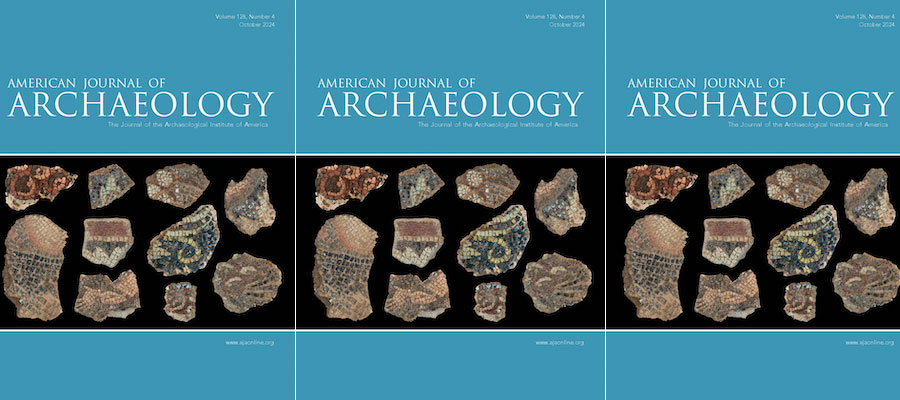American Journal of Archaeology, volume 128, no 4 (October 2024).
CONTENTS INCLUDE
Classical to Late Roman Sites at Diros Bay in the Mani Peninsula, Greece
Chelsea A.M. Gardner
This article presents a case study based on the results of an archaeological survey conducted between 2011 and 2014 in Diros Bay, southern Lakonia, Greece. This survey, conducted as part of the Diros Project and under the auspices of the Ephorate of Paleo-anthropology and Speleology, was the first systematic, pedestrian survey to be undertaken in the Mani peninsula. Specifically, this article examines two concentrations of ceramic assemblages within the survey boundary that represent secure archaeological evidence for activity in the region from the Greek Classical to the Late Roman period. Together, the macroscopic, petrographic, chemical, and geophysical analyses presented in this article demonstrate the potential that lies in examining small, rural settlements. The goals of the present work are threefold: first, to demonstrate the importance of analyzing pedestrian surface survey finds and in recording the material culture in understudied regions; second, to illustrate the discrepancy between the historical record of classical antiquity and the actual record of occupation in the form of archaeological remains; and third, to emphasize the potential that this region holds for understanding the nature of rural settlements in the ancient Mani peninsula throughout classical antiquity.
Late Fifth-Century CE Wall Mosaics from the Tetrapylon Street in Aphrodisias: Evidence for a Wall Mosaic Habit in Late Antiquity
Ine Jacobs and Tim Penn
This article presents evidence for late fifth-century CE wall mosaics from Aphrodisias, provincial capital of Caria, in western Asia Minor. The mosaics formed part of the decoration of an upper-story gallery belonging to one or more luxurious private residences located alongside the Tetrapylon Street, the city’s main north–south avenue. They are therefore a rare example of Late Antique wall mosaics from a domestic context. We present the context in which the mosaic fragments were found, the motifs that can still be recognized, and some of the technical characteristics of these mosaics. Combined with other elements of decoration found in association with the mosaic fragments, we offer a reconstruction of the decorative program of the gallery. We then broaden our view to trace wall mosaics elsewhere at Aphrodisias and discuss waste attesting to glass tessera production. We argue that an itinerant wall mosaic workshop or workshops were active at Aphrodisias in the late fifth and early sixth century CE, when the city’s monuments and residences were undergoing renovations in the wake of an earthquake. We examine the possibility of a wall mosaic habit that was much more widespread than previously thought, extending beyond the ecclesiastical contexts with which it is conventionally associated.
